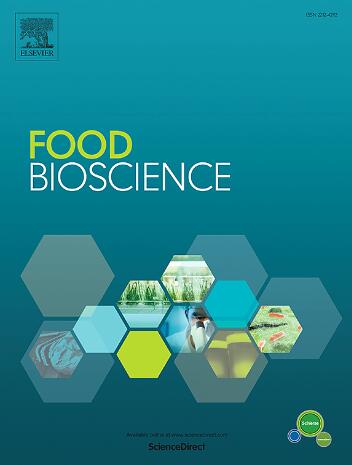Degradation of aflatoxin B1 by recombinant laccase AnLI from Aspergillus niger SF951 expressed in Escherichia coli BL21: a mechanism assessment in silico and in vitro
IF 4.8
1区 农林科学
Q1 FOOD SCIENCE & TECHNOLOGY
引用次数: 0
Abstract
There are approximately 25 % of global cereals contaminated with mycotoxins. As an extremely toxic carcinogen, aflatoxin B1 (AFB1) poses a serious threat to public health. Thus, efficient aflatoxin removal remains an urgent issue. Biological detoxification methods have become highly regarded. Because they are non - polluting, highly specific, gentle in operation, and environmentally friendly. In this study, the metagenomic data of the cultured microbiome of Salvia miltiorrhiza Bunge was utilized to excavate the strains carrying laccase genes. Through the mixed culture of coumarin medium and AFB1, the fungus Aspergillus niger SF951 was successfully screened out. By means of cloning based on the conserved sequence, the full-length gene of a novel laccase AnLI was characterized, along with its deduced amino acid sequences. After heterologously expressing in Escherichia coli BL21 and purification, the recombinant laccase rAnLI was successfully obtained. Under optimized reaction conditions, recombinant laccase rAnLI degraded up to 94.72 % of AFB1. UHPLC-MS/MS analysis detected four AFB1 degradation products. Cytotoxicity assays demonstrated that enzymatic degradation of AFB1 by rAnLI reduced toxicity. Molecular docking analysis further revealed that the binding of AnLI to AFB1 involved six amino acid residues. Collectively, this research has characterized a novel laccase exhibiting high efficiency in degrading AFB1. It also offers fresh perspectives on the molecular mechanisms underlying the degradation of AFB1.
大肠杆菌BL21中表达的黑曲霉SF951重组漆酶AnLI降解黄曲霉毒素B1的机制研究
全球约有25%的谷物受到真菌毒素污染。黄曲霉毒素B1 (AFB1)是一种剧毒致癌物,对公众健康构成严重威胁。因此,有效去除黄曲霉毒素仍然是一个紧迫的问题。生物解毒方法已受到高度重视。因为它们具有无污染、专属性强、操作温和、环保等特点。本研究利用丹参培养菌群的宏基因组数据,挖掘携带漆酶基因的菌株。通过香豆素培养基与AFB1的混合培养,成功筛选出真菌黑曲霉SF951。利用保守序列克隆的方法,鉴定了一种新型漆酶AnLI的全长基因及其推导出的氨基酸序列。通过在大肠杆菌BL21中异种表达和纯化,成功获得重组漆酶rAnLI。在优化的反应条件下,重组漆酶rAnLI对AFB1的降解率高达94.72%。UHPLC-MS/MS分析检测到4种AFB1降解产物。细胞毒性实验表明,rAnLI酶降解AFB1降低了毒性。分子对接分析进一步揭示了AnLI与AFB1的结合涉及6个氨基酸残基。总的来说,本研究表征了一种新型漆酶在降解AFB1方面表现出高效率。这也为AFB1降解的分子机制提供了新的视角。
本文章由计算机程序翻译,如有差异,请以英文原文为准。
求助全文
约1分钟内获得全文
求助全文
来源期刊

Food Bioscience
Biochemistry, Genetics and Molecular Biology-Biochemistry
CiteScore
6.40
自引率
5.80%
发文量
671
审稿时长
27 days
期刊介绍:
Food Bioscience is a peer-reviewed journal that aims to provide a forum for recent developments in the field of bio-related food research. The journal focuses on both fundamental and applied research worldwide, with special attention to ethnic and cultural aspects of food bioresearch.
 求助内容:
求助内容: 应助结果提醒方式:
应助结果提醒方式:


